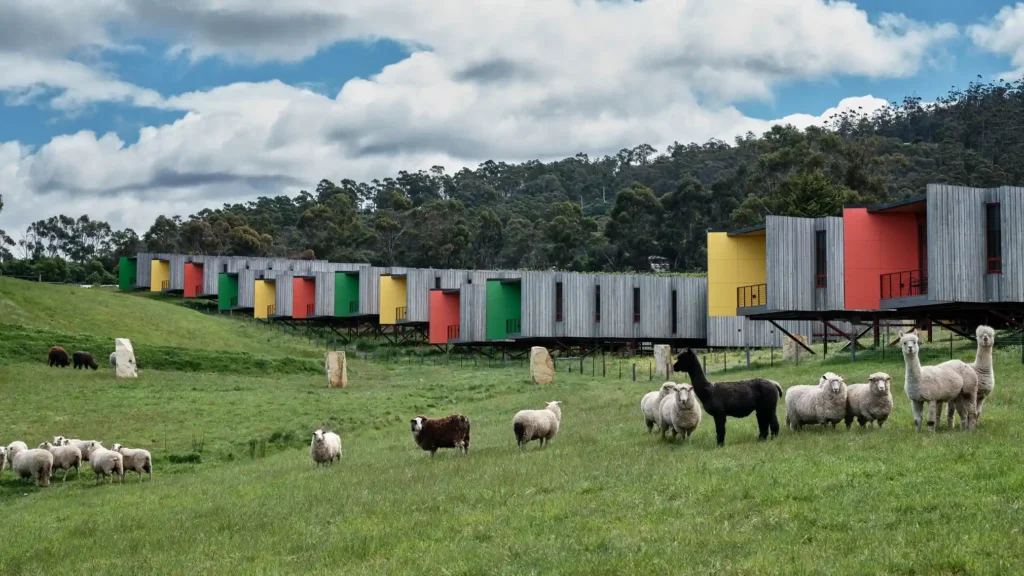
Every year, the World Architecture Festival releases a list of 15 designs around the world (SOURCE) that will become eligible for awards at the annual festival (taking place in Singapore later this year). As architects and designers, we take great delight in studying the creativity, beauty, and courage evident in each project.
The international shortlist this year spans categories such as religion, energy, transport, and health. They range in complexity from a simple oyster scaffolding pavilion in China to a hydrogen station (and everything possible in between).
As creators of hotel designs as part of our portfolio, we were perhaps most intrigued by the Iron Creek Bay Farm Stay development in Tasmania. The concept is an agricultural tourism property where guests can reconnect with nature–particularly the friendly sheep and alpacas.
The building designs seamlessly integrate with the farm hillsides, while yielding a modern sensibility that somehow blends with the rugged terrain.
But that’s just our favorite. Which design speaks to you?
